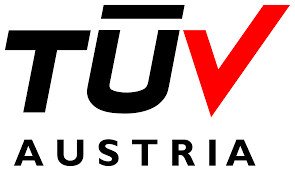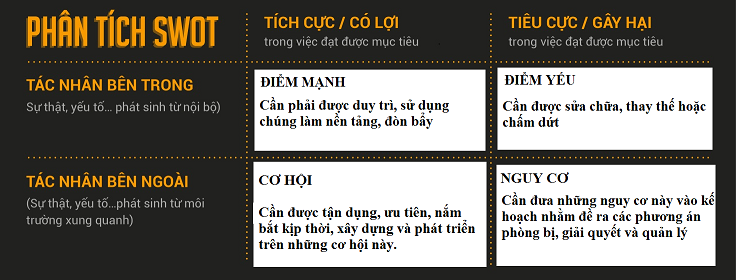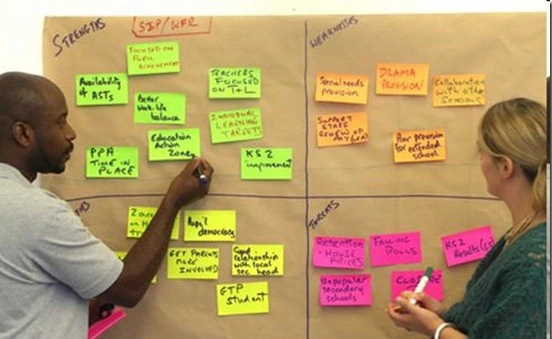
KNA COOPERATED WITH TUV AUSTRIA HELLAS ON AUDITING FSC STANDARDS IN VIETNAM
After time of exchanging and discussing, KNA CERT has successfully signed a cooperation agreement with TUV Austria on FSC/CoC certification services. Accordingl...
SWOT – an useful tool for making decision in any circumstance and in any enterprise. With these toolkit, enterprise can grasp and realize strengths, weaknesses, opportunities and challenges, thereby support sustainable development of the enterprise.
 CONCEPT
CONCEPT
SWOT stems from 4 initial letters of Strengths, Weaknesses, Opportunities and Threats. SWOT provides a useful tool to analyze business strategy, review and evaluate threats, orientation of a company or a project. SƯƠT is widely used in making business plan, building strategy, evaluate rivals, marketing, and advertising products and services etc.
ORIGIN OF SWOT
SWOT originated from 1960s-1970s when scientists including Marion Dosher, Ts. Otis Benepe, Albert Humphrey, Robert Stewart và Birger Lie researched to seek for the reason why many company failed in making business plan. 500 highest revenue companies by Fortune were included in this study which was conducted in Stanford Institute. SWOT was created then.
At the beginning, this model was called by the name SOFT: Satisfactory, Opportunity, Fault –Threat.
After being introduced in Zurich, Swizeland, they replaced F (Fault) with W (Weakness) which bore SWOT. It was not until 1966 that the first version was tested and introduced to us based on study work in Erie Technological. In 1973, SWOT was implemented in J W French Ltd and developed strongly fro that moment. In early 2004, SWOT was completed and found to be useful in delivering targets without pre-audit and expensive resources.
SWOT APPLICATION
SWOT helps us get the insight of the organization and enterprise as well as specify projects. Therefore, this method is particularly useful in making strategic planning decisions as well as amking plan. This SWOT model is applied in some cases such as:
SWOT PRACTICE
SWOT is an advantageous tool to deal with problems in different case. It’s time for you to learn more about SWOT to know how to make SWOT model and use it in the most effective way.
Firstly, SWOT possesses the following structure:
SWOT is presented as a matrix consisting of 2 rows and 2 columns and divided into 4 parts. Each part corresponds to Strengths, Weaknesses, Opportunities, and Threats. From this we have:
It can be seen that SWOT aims to determine your strengths and weaknesses to overcome. In other words, SWOT points out where to attack and where to defend. Enentually, SWOT needs applying properly to make action plan.
After apprehending the factors S, W, O, T, you should fill the table with information. Below are questions that you can ask yourself and your staff to complete the table.
 Strengths
Strengths
In first step, you need to highlight advantages of your company. These should be unique and distinct features you possese in comparision you’re your rivals. Answer the question: What can you do well and do best? What is your internal resource? How can you use advantages of human, knowledge, fame, skills, relationship, and technology, etc? Below are some fields for you to find out your strengths:
Mark your mind that you should be practical, not over humble, conscious to consider your strengths especially to evaluate rivals. This is also an advantage of SWOT.
Weaknesses
On the contrary, it’s time you listed weakness that your company might not do well. If confused, you can find out basic factors through resource, asset, human, etc. If there is any “absence” of strength, there are certainly weaknesses. Besides, you ask yourself the following questions: What job do you do poorly, even worst? What are you avoiding? Which negative comments you receive from consumers and the market etc.
You just have to remember one point: weaknesses are issues that exist within people or organizations and prevent you from reaching your goal. When you look straight at the truth then recognize your limits, you will answer the question Where is the weakness? to find the solution to overcome.
Opportunities
Listing all external positive incentives assists your business. These factors can be:
 Threats
Threats
This step will help you to analyze the external factors that are causing difficulties on your path to success. Listing a list of the following issues will help you find out the threat that you and the organization will face in the future.
Sau khi tìm ra nguy cơ, điều bạn cần làm là đề ra phương án giải quyết và phương án này thường là nâng cao kỹ năng quản trị để không bị những nguy cơ nhấn chìm hoàn toàn. Bạn đã có cách đối phó với những rủi ro tiềm tàng này chưa? Nếu chưa, hãy nhanh chóng vạch ra và triển khai những cách khả thi để giảm bớt độ nghiêm trọng, hoặc né tránh (nếu được) những nguy cơ này.
EXPANDING SWOT
After clarifying 4 mentioned factors, many stop. However, if you stop here without any actions, SWOT might be useless. After finishing answering 4 questions, then you should make proper strategy. It is suggested that you use 4 fundalmental strategy to obtain your target:
CONCUSION
Through the knowledge provide by KNA CERT, you might have overview of SWOT analysis. Not only is this model applied in business but also in every field of life. It is a simple but effective method. Wish you all the success!
